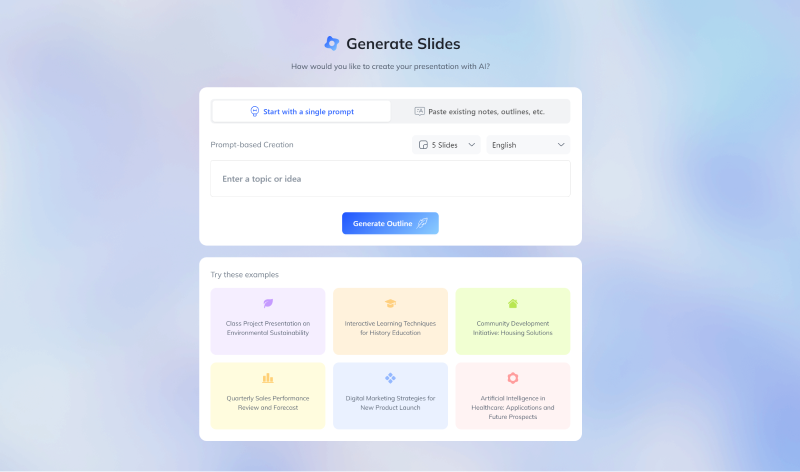How to Create and Present a Thesis Defense Presentation
If you're a graduate student nearing the end of your degree, you're likely familiar with the term "thesis defense."" In many countries, completing a graduate degree involves writing a thesis-a substantial paper based on your field of study topic. After submitting your formal thesis presentation, you'll be given a date for your defense, which typically includes a committee of professors and sometimes other professionals from related fields. During the defense, you'll present your research and answer questions to demonstrate your understanding of your topic.
A thesis defense has two main parts: the thesis and the defense. The thesis demonstrates your understanding of your program and major, and it's more than just an extended essay. It asserts something significant about your research topic and is one of the most crucial documents you'll produce during your academic career. The defense is where you present evidence to support and prove your research. You must be prepared to answer questions from the committee and any other panel members, convincing them of your thesis's validity with ample proof.
While the thesis defense might seem daunting, it's often more of a formality to ensure you thoroughly understand your work rather than an intense interrogation. The key to a successful defense is preparing an effective presentation that highlights your main points and findings.
How to Make an Amazing Presentation

After months or even years of research, your thesis content is ready. Now, the challenge is to present it in the most compelling way possible. A well-designed presentation can make your hard work shine, and using a visual format is crucial for capturing your audience's attention. To present your thesis information clearly and concisely, consider using Tenorshare AI Slides. This powerful tool allows you to generate a polished PowerPoint presentation with just a few clicks, offering multiple templates tailored to your thesis needs.

When preparing your effective presentation outline, remember that you won't have time to cover everything. Focus on the most critical ideas that best illustrate your research. Prioritize the main points and key findings you can visually represent in your slides.
Your presentation time is limited. For example, in a 45-minute defense, you'll have about 10 minutes per project, which is shorter than a typical research conference presentation. Concentrate on the big picture and leave finer details for the Q&A session. Keep backup slides with additional information ready, as these might come in handy if the committee asks specific questions.
Remember, your audience has seen many presentations packed with data and details. Avoid overwhelming them with too much information. Instead, simplify your deck by focusing on one point per slide. This approach helps the committee follow your argument more easily and makes your defense more effective.
Use minimal text on your slides. The committee wants to hear you speak passionately and authentically about your research, not read blocks of text. Each slide should act as a cue for your discussion. Ensure there's enough white space to keep the audience's attention on the critical elements of each slide.
You don't need to include everything from your paper in your presentation script. Narrow down your ideas to the most critical details, such as your statistics and findings. If the committee wants more information, they'll ask during the defense.
Defining the Concept of Your Thesis Presentation
After choosing the template from Tenorshare AI Slides that best suits the needs and subject matter of your thesis, it's time to define an overarching concept. This is the main theme on which your designs are based. It must be relevant to your thesis, as its purpose is to guide your selection of colors, typography, images, style, etc.
These elements should be portrayed in a way that supports the main message of your slides and should be aligned with your concept both visually and sociologically. Tenorshare AI Slides makes this process easy by offering templates that are not only visually appealing but also designed to communicate your thesis's key points effectively.
Structuring Your Thesis Defense Presentation
A well-structured presentation is crucial for guiding your audience through your research. Here's how to organize your presentation effectively:
1.Introduction
- How Do You Welcome the Audience:strong> Start by greeting the audience and introducing yourself. A warm welcome sets a positive tone for the presentation.
- Tell Them Why You Did This Thesis: Provide context by explaining the motivation behind your research. Why is your study important? What gap in the literature does it fill?
2.Literature Review and Objectives
- Present Background Information: Offer a brief literature review to contextualize your research. This helps the audience understand where your study fits within the broader field.
- State Your Research Objectives: Clearly outline the goals of your research and what you aimed to achieve.
3.Methodology
- Explain Your Research Methods: Describe the methods you used to conduct your research. Justify your choice of methods and how they are appropriate for addressing your research questions.
4.Findings and Analysis
- Go into the Content by Explaining Your Thesis Part by Part: Break down your thesis into sections and present your findings systematically. Use visuals like charts and graphs to make your data more accessible.
- Interpret the Results: Discuss what your findings mean in the context of your research objectives and how they contribute to the field.
5.Conclusion
- Summarize Key Points: Recap the main findings of your research and their implications.
- How to End the Defense of the Thesis: End your presentation with a strong conclusion. Reiterate the significance of your work and suggest potential areas for future research.
Conclusion
Creating and presenting a thesis defense presentation requires a clear, well-structured approach and confident delivery. By following the steps in this guide and utilizing an AI presentation maker like Tenorshare AI Slides, you can craft a visually compelling and professional presentation that effectively communicates your research. With the right preparation-practicing thoroughly, anticipating questions, and presenting confidently-you'll leave a lasting impression and make your thesis defense a success.
Tenorshare AI Slides
- Free AI Presentation Maker for One-Click Professional Slides in Minutes
- Free Export for All Your Presentation Needs
- Advanced Text and Language Options
- Tailor Your Presentations to Perfection with Our Templates
You Might Also Like
- How to Use Flaticon in Google Slides: A Complete Guide
- How to Use the Highlighter Tool for Text and Images in Google Slides
- How to Insert and Edit a Table in a Slide: The Ultimate Guide
- How to Master Slide Layout in PowerPoint for Professional Presentations [2026 Guide]
- How to Easily Add a Background Image in PPT for Stunning Slides [2026 Guide]
- How to Add, Insert, and Edit Text or Image Watermarks in Google Slides
- How to Add Watermark in One or All Slides in PowerPoint 2019, 2016, 2010, 2007

